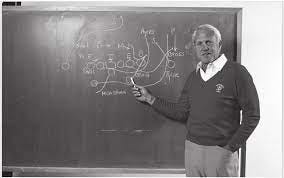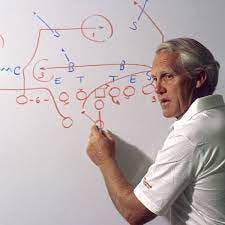I’m continuing to read Bill Walsh’s book The Score Takes Care of Itself which describes the philosophy that helped Walsh turn the failing San Francisco 49ers into an NFL dynasty. Walsh advised lots of silicon valley business leaders and it’s easy to see why; his ideas can clearly help companies run better.
Walsh emphasizes the importance of contingency planning: writing out in advance how the team will react to different scenarios. What plays will we run if we go down by two touchdowns in the first quarter? What will we do if our quarterback gets hurt?
I have an aversion to planning. I tend to believe that planning takes a lot of time and energy, that it gives you a false sense of control, and that the world unfolds in ways that are so unpredictable as to render most plans irrelevant. Planning is not in my nature, and I think it is important to understand and follow your nature where you can.
But, Walsh is adamant that contingency plans are vital for success and I do like the way he frames it. He argues that
No one makes decisions as well under pressure or in crisis as they do when they have time and space to think clearly
Having plans laid out for different scenarios that are visible to the organization helps prepare people and gives them confidence and peace of mind
I can clearly see the value in both of these arguments. And I like the idea of planning as writing out responses to possible scenarios, as opposed to simply writing out the future that you want or expect to happen. So, I’m going to try this method out and see if I can make it work with my planning-resistant nature.





Playful addendum:
Is CP =, <, or > CE*PE ?
CP is Cost of planning
CE is Cost of event
PE is Probability of event
Perhaps the cost of the time and resources devoted to contingency planning should be, at least in part, related to (1) the probability of the event and (2) the cost or consequence of the event should it occur.